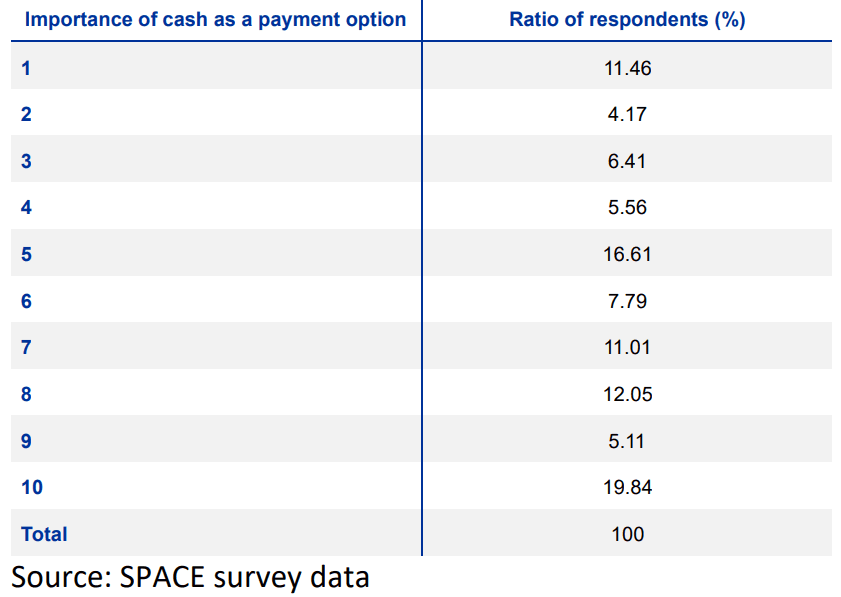
Payment Preferences Across Europe
‘Wide access to cash is fundamentally important for a healthy economy’, says a recent European Central Bank publication that examines studies from across the EU to understand how people pay, and what factors into their payment choices.
The working paper ‘Consumer payment preferences in the euro area’ by László Kajdi opens with a literature overview highlighting that while individuals lacking a bank account, or good access to banking facilities, are more dependent on cash, people from a variety of backgrounds—with ample access to cashless options—also reach for banknotes and coins. Hungarian data showed 25 percent of people receiving higher incomes identified cash as their primary payment method. Spanish data from Banco de España also challenged the notion that cash is only preferred among the older generation, as the youngest age groups were also likely to report cash as their usual payment choice.
Dutch research found there can also be a difference between what people say is their preferred payment method, and how they actually transact on a daily basis. For example, among individuals reporting a preference for card payments, many people ‘quite frequently use cash’, especially for lower-value transactions. Data from Poland found that both consumers and merchants had ‘a strong emotional attitude towards [cash]’, and that cash was more positively perceived in terms of convenience and safety than cashless options.
Examining the ECB’s own SPACE research (Study on Payment Attitudes of Consumers in the Euro area), Kajdi notes that 22 percent of people said they preferred paying cash in shops, with 55 percent preferring cards or other cashless options, and 23 percent having no clear preference. Further analysis of this showed that—counter to the expectation that older people would have stronger cash preferences—the likelihood of choosing cash in the oldest age group only slightly exceeded that found among younger respondents.
The same survey also showed the majority of people believe it is important to have the option to pay with cash. Participants were asked to rank the importance of being able to use cash from one (least important) to ten (most important). The highest percentage of people (20 percent) ranked it as a ten. 11.5 percent of people chose one, with one to four rankings accounting for a total of 27.6 percent. 16.6 percent said five, with six to ten rankings accounting for a total of 55.8 percent.

Unsurprisingly, the research also showed individuals who receive the highest percentages of their income in cash had a stronger preference for it than individuals who received lower cash amounts. Kajdi concludes that, without further information, it is hard to fully understand this data. Individuals who prefer paying in cash may in turn choose jobs and employers who will pay them in cash, or alternatively, receiving their income in cash may drive them to also spend in cash.
